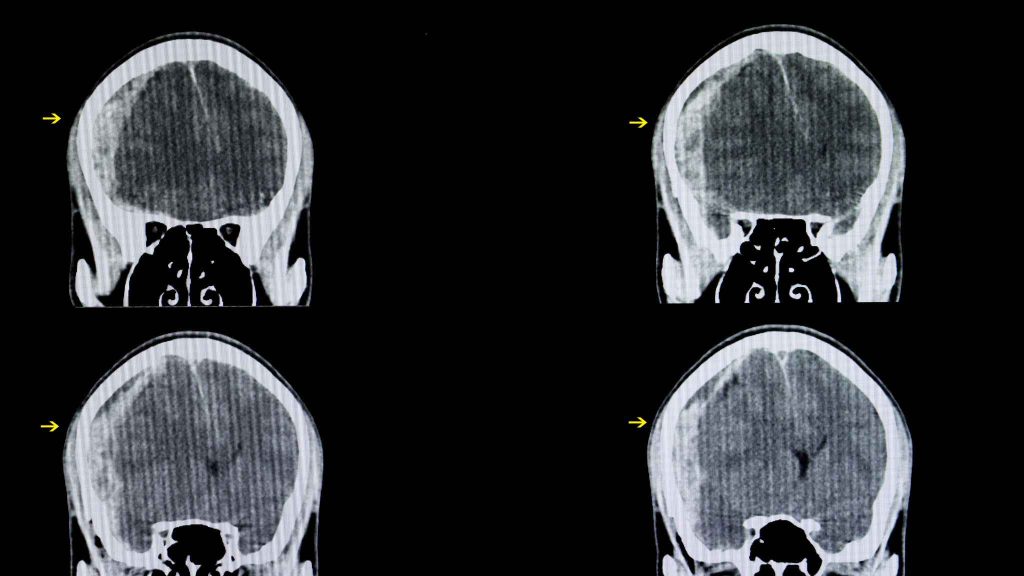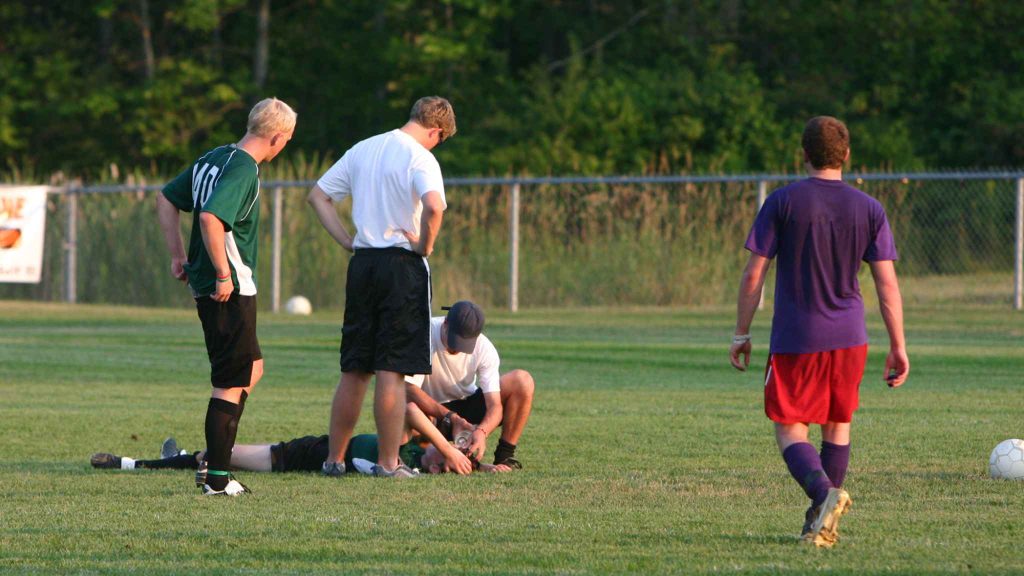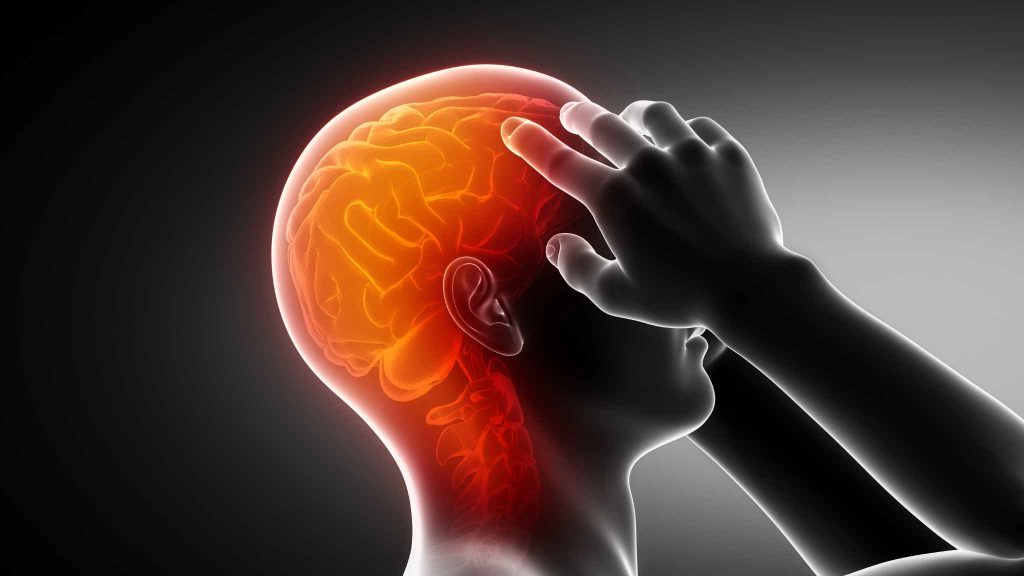First Aid For Head Injury

When we think of head injuries, we often think about traumatic events like car accidents or sports injuries. But what about everyday activities that can leave us vulnerable to a head injury?
Unfortunately, a head injury is not something that should be taken lightly. It’s important to know the signs and symptoms of a head injury as well as the steps you should take when faced with one.
In this blog post, we’ll explore the first aid procedures for a head injury in depth so that you’ll know exactly what to do if you or someone else experiences one.
What is a head injury?
A head injury is any type of injury that results in trauma to the head. This can include injuries to the scalp, skull, brain, or other structures in the head. Head injuries can be mild, moderate, or severe. They can occur suddenly, such as in a car accident, or over time, such as from a fall.
Some head injuries are also known as concussions. Concussions are usually caused by a blow to the head or a jolt to the body that causes the brain to move around inside the skull. This can cause damage to the brain and lead to symptoms such as headache, dizziness, nausea, and confusion. Most people with concussions recover within a few days with rest and no further medical treatment.
Moderate to severe head injuries are more serious and can require hospitalisation. These injuries can cause bleeding in the brain (hemorrhage), swelling of the brain (oedema), or both. They can also lead to skull fractures and other damage to the brain. Moderate to severe head injuries can have long-term effects on cognitive function and quality of life.
Symptoms of a head injury
If you think someone has a head injury, it is important to look for signs and symptoms of a concussion or a more serious head injury.

Here are things to look out for if someone has sustained. a head injury:
- Did they lose consciousness?
- Did they vomit?
- If so, did they vomit more than once?
- Were they drowsy?
- Do they don’t respond to your voice?
- Is there any memory loss? loss of orientation, time, place? Obviously, a very young child may not be able to answer those questions.
- Any visual disturbance? Blurred or double vision?
- Are the pupils the same size?
- Any weakness in the arms and legs?
- Did they have something stuck in their head or anything, causing any bleeding?
- Is there a large bump or a bruise?
- Did they have a seizure convulsion or fit?
- Any bleeding or discharge from the ear or the nose
- Poor coordination and clumsiness
- A persistent headache, that does not respond to paracetamol
- Difficulty swallowing or coughing
- Sensitivity to noise
- Slurred speech
If the person shows any of these signs or symptoms after a fall or other head injury, call emergency services right away. Do not wait to see if the person wakes up.

How common are head injuries?
Brain injury is common. According to the Australian Bureau of Statistics, over 700,000 Australians have a brain injury, with significant restrictions to their daily activities.
Three in every four of these people are aged 65 or under. As many as two out of every three acquired their brain injury before the age of 25. Three-quarters of people with a brain injury are men.
Head injuries are most common in people aged 15-24 years old and 75+ years old. However, all age groups are at risk of sustaining a head injury. Head injuries can occur due to a number of reasons, including but not limited to: car accidents, falls, being struck by an object, or shaken baby syndrome.
Symptoms of a head injury can range from mild (a headache) to severe (loss of consciousness). It is important to seek medical attention immediately if you or someone you know has suffered a blow to the head or any other type of head injury, even if symptoms seem minor.

First aid for head injury
If you or someone you are with experiences a head injury, it is important to know how to properly provide first aid. This can help minimise the risk of further injury and improve the chances of a full recovery.
First, if the person is bleeding, apply direct pressure to the wound using a clean cloth. If the bleeding is severe, do not attempt to remove any objects that may be embedded in the wound. Seek medical attention immediately.
Second, if the person is not bleeding but does have a bump or bruise on their head, gently apply an ice pack to the area for 15 minutes at a time. Repeat as needed for pain relief.
Third, keep an eye on the person for any signs of worsening symptoms, such as headache, nausea, vomiting, dizziness, or confusion. If these develop, seek medical attention immediately.
Fourth, if the person is unconscious and not breathing normally, call emergency services and begin CPR (cardiopulmonary resuscitation).
By following these steps, you can help ensure that someone with a head injury receives the proper care and treatment they need.

Is vomiting a symptom of head injury?
When someone experiences a head injury, it is important to look for signs of internal bleeding. One way to determine if there is internal bleeding is if the person vomits blood. If the person has a concussion, they may also experience nausea and vomiting.
In children, we generally say they may vomit once from shock, but if they vomit two or more times, they should be assessed by a doctor.
Is it ok to fall asleep after a head injury?
When it comes to head injuries, one of the most important things you can do is to stay awake and alert. This can be difficult to do, especially if you are in pain or feeling nauseous. If you feel like you are going to fall asleep, it is important to resist the temptation and get yourself checked out.

There are a few reasons why it is important to stay awake after a head injury. First, if you fall asleep, you will not be able to monitor your symptoms and will not be able to tell if they are getting worse. This can be trickier with young children who may normally nap during the day.
If you have any other injuries, such as a neck injury, it is important to keep your spine in alignment and sleeping can cause you to move and potentially worsen the injury.
How to stop bleeding on the head
If you are bleeding from a head injury, it is essential to seek medical attention as soon as possible. However, there are some steps you can take to stop the bleeding before professional help arrives.
If the bleeding is coming from a cut or laceration, apply pressure to the wound with a clean cloth or a sanitary towel. If the cloth becomes soaked with blood, do not remove it – continue to apply pressure and add more layers of cloth on top if necessary and call emergency services.

If the bleeding is coming from a gaping wound or bone is protruding from the skin, do not attempt to close the wound or push the bone back in place. Simply apply pressure to control the bleeding and call emergency services.
If an object is lodged in the wound, do not remove it – this could cause further damage. Again, apply pressure to control the bleeding and call emergency services.
Common causes of head injury
One of the most common causes of head injury is falling. This can happen at any age, but is most common in young children and older adults. Head injuries can also occur from car accidents, sports injuries, or abuse.
Other common causes of head injury include:
- Being hit in the head with an object
- Having a head collision with another person or object
- Experiencing a blast wave from an explosion

When to see a doctor with a head injury
If you have a head injury, it is important to see a doctor as soon as possible. This is because head injuries can be very serious and can lead to long-term problems if they are not treated properly.
If you have any of the following symptoms, you should see a doctor straight away:
- severe head pain that does not go away
- dizziness or feeling faint
- ringing in the ears
- double vision or blurred vision
- slurred speech
- nausea or vomiting
- convulsions or seizures.
Or if you are worried and feel like something is not right.
What kind of activity can I do after a head injury?
There are a few things you can do to help yourself recover after a head injury. First, get plenty of rest. Your body needs time to heal, so give it the chance to do so by getting some sleep.
Secondly, eat healthy foods and drink lots of fluids. This will help your body to function at its best and promote healing. Finally, avoid activities that could put a strain on your head or neck, such as lifting heavy objects or participating in contact sports.
Give your body the time it needs to heal fully before engaging in any strenuous activity.

What’s the difference between head injury and concussion?
There isn’t really a difference between a concussion and a head injury, as they are the same thing. It is more important to recognise the severity of the injury to determine if it is a concussion or just a bump and bruise or worse.
A concussion is a type of brain injury that is caused by a blow to the head or a sudden jolt to the body. Concussions can cause a variety of symptoms, including headache, dizziness, nausea, vomiting, blurred vision, and problems with memory and concentration. It is important to seek medical attention if you think you or someone else may have suffered a concussion.
Sometimes this can be more serious than concussions and can include skull fractures, internal bleeding, and damage to the brain. Head injuries can be life-threatening and require immediate medical attention.

First Aid Courses
We run group childcare first aid courses Australia-wide. Contact us today about your first aid needs, and we will give you a quote on the same day.
If you find our course cheaper somewhere else, let us know and we will beat it by 10%!
While there are many different types of first aid courses available, choosing the one that is right for you and your workplace needs is important.
Contact us today via our website and we can organise your workplace first aid needs.

